Benchmarking: Can AppServer Beat Symfony’s Performance?
Key Takeaways
- Appserver and Symfony, two PHP frameworks, were tested for performance using three types of responses: a basic “Hello World” response, a response with dynamic templating but no database access, and a page with both database access and templating. The tests were conducted on a 1GB standard VM on Rackspace.
- The results showed that Symfony was approximately 16% faster in the “Hello World” test, but Appserver performed better in rendering the login page. Both frameworks slowed down significantly when database requests to SQLite were introduced.
- Symfony was also installed onto Appserver to compare its performance against the LEMP stack. The results showed that the PHP web server in Appserver has additional overhead compared to Nginx, but this was expected.
- The author concludes that while Appserver’s performance is not as good as Symfony’s in some respects, it is still a promising technology. The author believes that Appserver could outperform Symfony for larger applications where a significant number of classes or services need to be constantly reloaded.
After the release of the first part of our Appserver series, it was clear through the ensuing discussions on both SitePoint and Reddit that we had touched a nerve for a good number of PHP channel’s devoted readers. I also quickly realized this new (for PHP) technology had a good number of serious doubters. One of the most poignant responses in the discussions was something along the lines of,
“with the way pthreads works internally with PHP, appserver can never be as fast as a regular LEMP or even LAMP stack.”
The Challenge
Needless to say, those doubtful and critical comments sounded like a real challenge. I was also very interested in finding out where appserver would land, if it were to be benchmarked against another well known PHP framework.
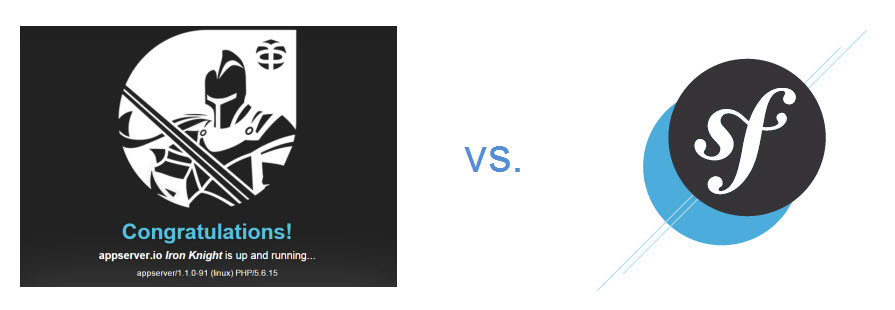
I decided to use my favorite framework, Symfony, to make the comparison. This is because appserver, as a stock PHP application server, also offers a good bit of important application functionality similar to Symfony. These functions include a dependency injection container, a request and response object, a method for persistence, etc. In other words, it gives the developer the basics to build an MVC application, just like Symfony does.
For those of you wondering what pthreads is, it is a PHP extension used in the core of appserver, which allows PHP to build a multi-threaded PHP server environment. If you aren’t sure what that means, or why it is at all relevant, please read the previous post.
LEMP or LAMP stacks are the usual way PHP applications are served with Linux.
-
Linux, Nginx (EngineX), MySql and PHP -> LEMP
-
Linux, Apache, MySQL and PHP -> LAMP
The Approach
The basic idea of this post is to try to dispel the criticism about appserver performing poorly, or at least much worse than a framework like Symfony.
The tests were run with simple programs, so we can see the overhead we’d find with standard programs built on top of a larger framework. I consider the overhead typical for any enterprise-grade, professional PHP application.
We will be testing for 3 types of responses.
- A straight “Hello World” response. (Hello World page)
- A response with no database access, but with dynamic templating (Login page) (Note: to make the test fair, I took out all the content on the login page of the Symfony demo login page, so the document lengths would be similar.
- A page with database access and templating (Content page) – Note: to also make this part a fair comparison, I added the content from the first page of Symfony’s blog list to the items list of the appserver demo app.
Comparing it to Symfony was relatively easy, since Symfony can also be installed with a demo application. The appserver demo app isn’t a blog like Symfony’s, but rather a sort of to-do list kind of application. Again, I added the same content from the Symfony Blog posts index page into the “to-do” list index page, so the page sizes were approximately the same.
Although I’ve read one shouldn’t use the Symfony demo for benchmarking, I see no real reason not to in this case. Both “demos” aren’t made for benchmarking really, so they both have the same disadvantages. And, in this little exercise, we want to see how appserver compares in relation to similar kinds of responses, be it dynamic content, hello world or a login page.
Funny enough, they both use Sqlite as the database and doctrine for database abstraction for their demo applications. So, as systems, they are very similar in this respect too.
The Setup
I ran the tests on a 1GB standard VM on Rackspace, so the tests would be as neutral as possible.
The VM was created through Puphpet to build a Debian Wheezy LESP stack (LESP because we are using SQLite). I later installed Symfony and appserver manually. Since appserver’s webserver initially accepts requests through port 9080, it was easy to run both systems in parallel. Symfony is using php-fpm version 5.6.16 and appserver is using its own installed version of php-fpm version 5.6.15. I used PHP5.6 and not PHP7 with Symfony to keep the comparison fair between the two systems and for a proper apples to apples comparison. Appserver only comes with PHP5.6 currently; version 1.2.0 will be arriving with PHP7 some time towards the middle to end of this year.
To test the two systems, I used Apache Bench, similar to the tests done in this PHP framework benchmark repository. I also ran a three second test with 10 concurrent users with only one difference. I used the “-k” keepalive option, which is a standard used for HTTP connections in all web browsers.
The main goal of the tests was to get the number of requests per second.
I did not measure memory usage, as this measurement is not really comparable between Symfony’s standard PHP “shared nothing” and appserver’s threaded environments. That would be an apples to oranges comparison.
The only thing I did for optimization for both systems was carry out the official steps for deploying to a production environment.
The Results
I’ve broken down the results into the three sets of responses, as mentioned above.
Symfony’s Hello World page
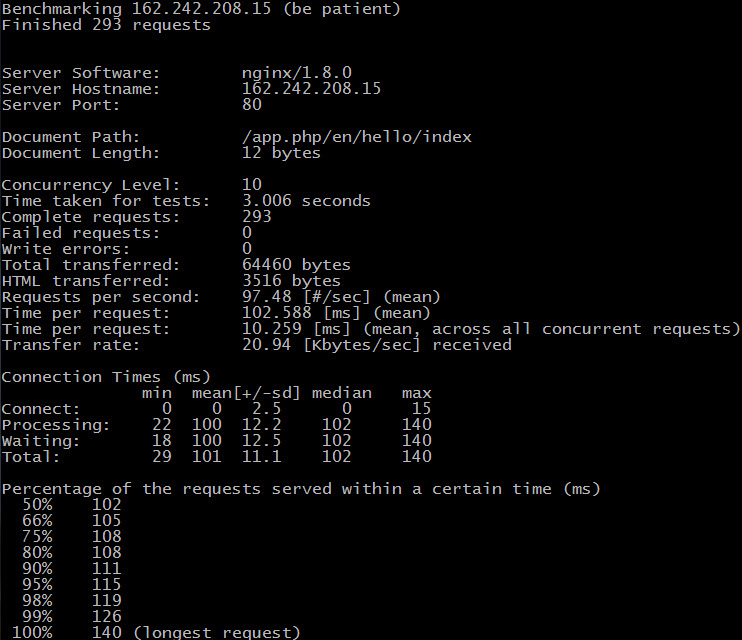
Symfony’s Login page
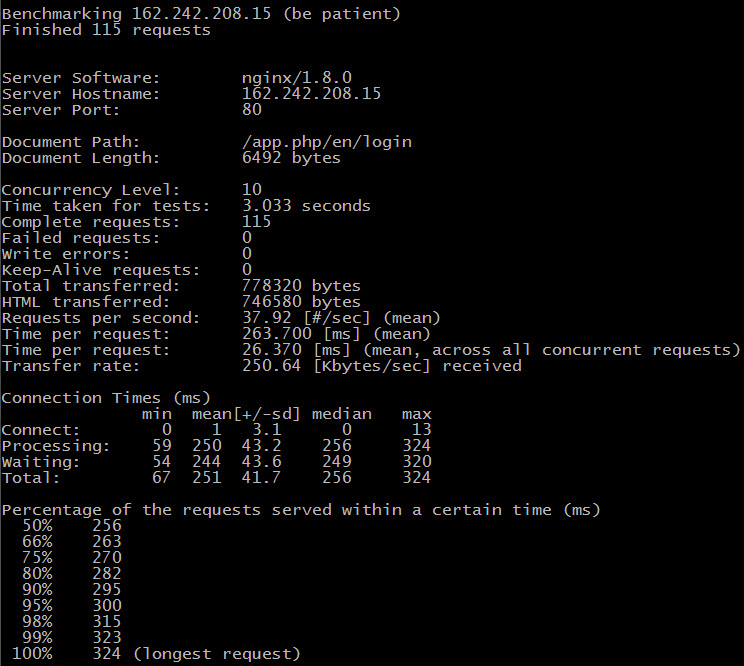
Symfony’s Content page
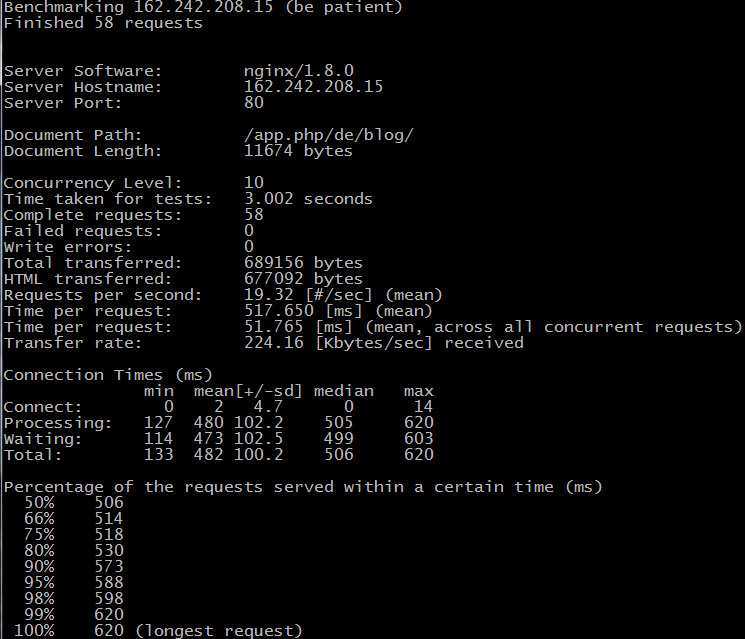
appserver’s Hello World page
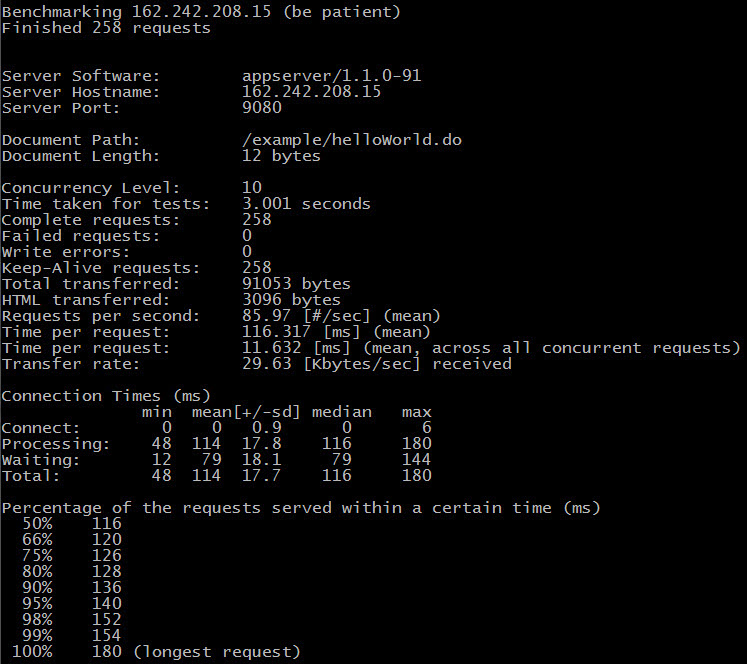
appserver’s Login Page
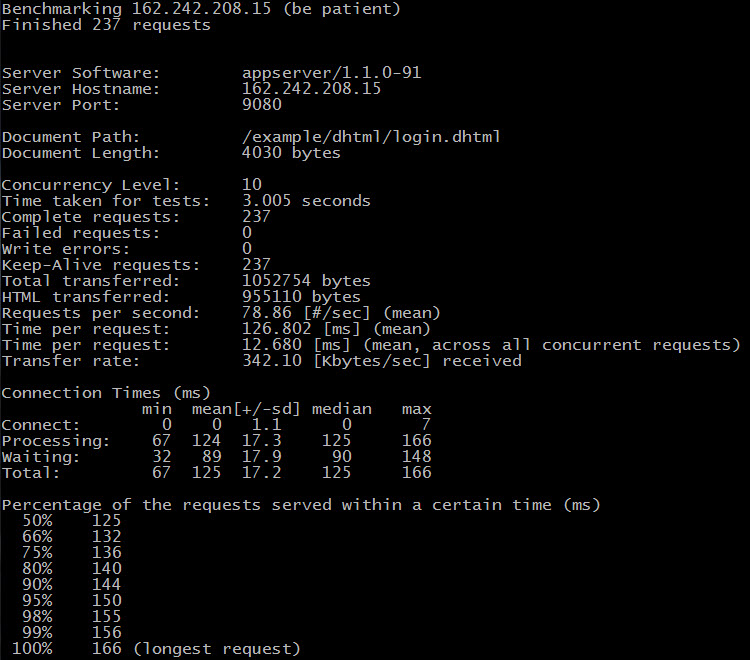
appserver’s Content page

Results Graph

Symfony on appserver
Just to see what would happen, I also installed Symfony onto appserver. Here are the results compared to the LESP (LEMP in the graphic) stack.

Conclusion
Looking at the appserver/Symfony vs. LEMP/Symfony results, I’d say the PHP webserver in appserver has additional overhead compared to Nginx. That is pretty much understandable. To be honest though, I would have also guessed a PHP based web server would do a whole lot worse compared to Nginx. So, with these results, I’d give a thumbs up to the dev team for doing a pretty good job with their pure PHP web server implementation.
As one can also see, once a SQLite database gets into the picture, it is certainly the bottleneck. Both slow down considerably when database requests to SQLite come up.
For the login page, appserver wins out. To render the page, it uses dhtml templates. I’d say this might show the overhead Twig puts on Symfony, despite Twig’s caching of the templates.
I would also venture to say that appserver’s slightly poorer hello world result lies within the PHP web server overhead, even though the results are actually quite similar, with Symfony only approximately 16% faster. Compared to Symfony on appserver, the results show appserver’s web server and application server combination do a good job overall in combination, to speed up processing.
I hope this short post will dispel some of the mistrust some people may have about the possible performance one can get out of their applications on appserver. The technology is quite new, but still very interesting, and as we can see, not really all that bad in terms of performance.
An important note: with these tests, we are not testing the real advantages or strengths of appserver. Once an application starts to get much larger, where a larger number of classes/ services needs to be constantly (re)loaded in the standard PHP environment, I believe appserver would start to do considerably better than Symfony. I’ll work on testing this aspect at a later date, as it is actually the real selling point for a threaded PHP environment.
Hopefully, some of you will be motivated to at least give appserver a spin. The results above should dispel any bad performance concerns, and the appserver platform can only improve over time, especially if a good number of developers use it and put it through its paces.
In the next two posts, we’ll start to get our hands dirty and actually develop an appsever application. Stay tuned for more!
Frequently Asked Questions on Symfony’s Performance and Benchmarking
What is Symfony and why is it important in web development?
Symfony is a PHP framework used for web application development. It’s a set of reusable PHP components and a PHP framework for web projects. Symfony is important in web development because it provides a structure and foundation for building robust applications. It simplifies the coding process, reduces the amount of repetitive code, and helps to ensure that your code is organized and manageable. It also provides a lot of functionality out of the box, such as user authentication, form handling, and database abstraction, which can save developers a lot of time.
How does Symfony’s performance compare to other PHP frameworks?
Symfony is known for its robustness and flexibility, but it’s often criticized for its performance. However, with proper optimization and configuration, Symfony can deliver high performance comparable to other PHP frameworks. It’s important to note that the performance of a framework is often less important than how it’s used. Even the fastest framework can be slow if not used correctly.
What is benchmarking and why is it important in evaluating Symfony’s performance?
Benchmarking is the process of comparing the performance of your system or application against a standard or set of standards. This can help identify areas for improvement and measure the impact of optimization efforts. In the context of Symfony, benchmarking can help evaluate its performance compared to other frameworks or previous versions of Symfony itself.
How can I optimize Symfony’s performance?
There are several ways to optimize Symfony’s performance. These include using the built-in Symfony profiler to identify performance bottlenecks, enabling the OPcache extension for PHP, optimizing your database queries, and using a PHP accelerator. It’s also important to keep your Symfony installation up to date, as newer versions often include performance improvements.
What is Appserver and how does it compare to Symfony?
Appserver is a multithreaded application server for PHP, written in PHP. It’s designed to create a bridge between the application logic and the business logic, allowing for a more efficient use of resources. In terms of performance, Appserver can potentially outperform Symfony, especially in scenarios with high concurrency. However, it’s less mature and widely used than Symfony, which may impact its suitability for certain projects.
How does PHP 8.0 performance compare to PHP 7.4 in Symfony?
PHP 8.0 introduces several performance improvements over PHP 7.4, which can result in faster execution times and lower memory usage in Symfony applications. However, the exact performance gain will depend on the specific characteristics of your application.
What are the packaging guidelines for PHP?
The packaging guidelines for PHP provide a set of best practices for packaging PHP applications for distribution. These guidelines cover topics such as file organization, naming conventions, and dependency management. Following these guidelines can help ensure that your PHP applications are easy to install, update, and remove.
How does Symfony 5.0 performance compare to previous versions?
Symfony 5.0 introduces several performance improvements over previous versions, including faster routing, improved autowiring, and optimized container compilation. However, the exact performance gain will depend on the specific characteristics of your application.
What is the official Symfony website?
The official Symfony website is https://symfony.com/. It provides a wealth of resources for Symfony developers, including documentation, tutorials, and community forums.
How can I learn more about Symfony’s performance and benchmarking?
There are many resources available for learning more about Symfony’s performance and benchmarking. These include the official Symfony documentation, community forums, and blog posts from experienced Symfony developers. Additionally, you can use benchmarking tools to conduct your own performance tests and gain a deeper understanding of Symfony’s performance characteristics.
Scott has been supporting customers using powerful PHP applications like Wordpress, vBulletin and Xenforo in his spare time for over 13 years. His company (also ran as a hobby) was the distributor for the German version of vBulletin for 12 of those years. The past year and a half, he's been taking on more of the developer roll and is now learning about new technologies for his new project Skooppa.com. His goal at Sitepoint is to share these new technologies with the PHP community.
Published in
·automation·Debugging & Deployment·Development Environment·Docker·Installation·Laravel·Performance & Scaling·PHP·October 16, 2015



